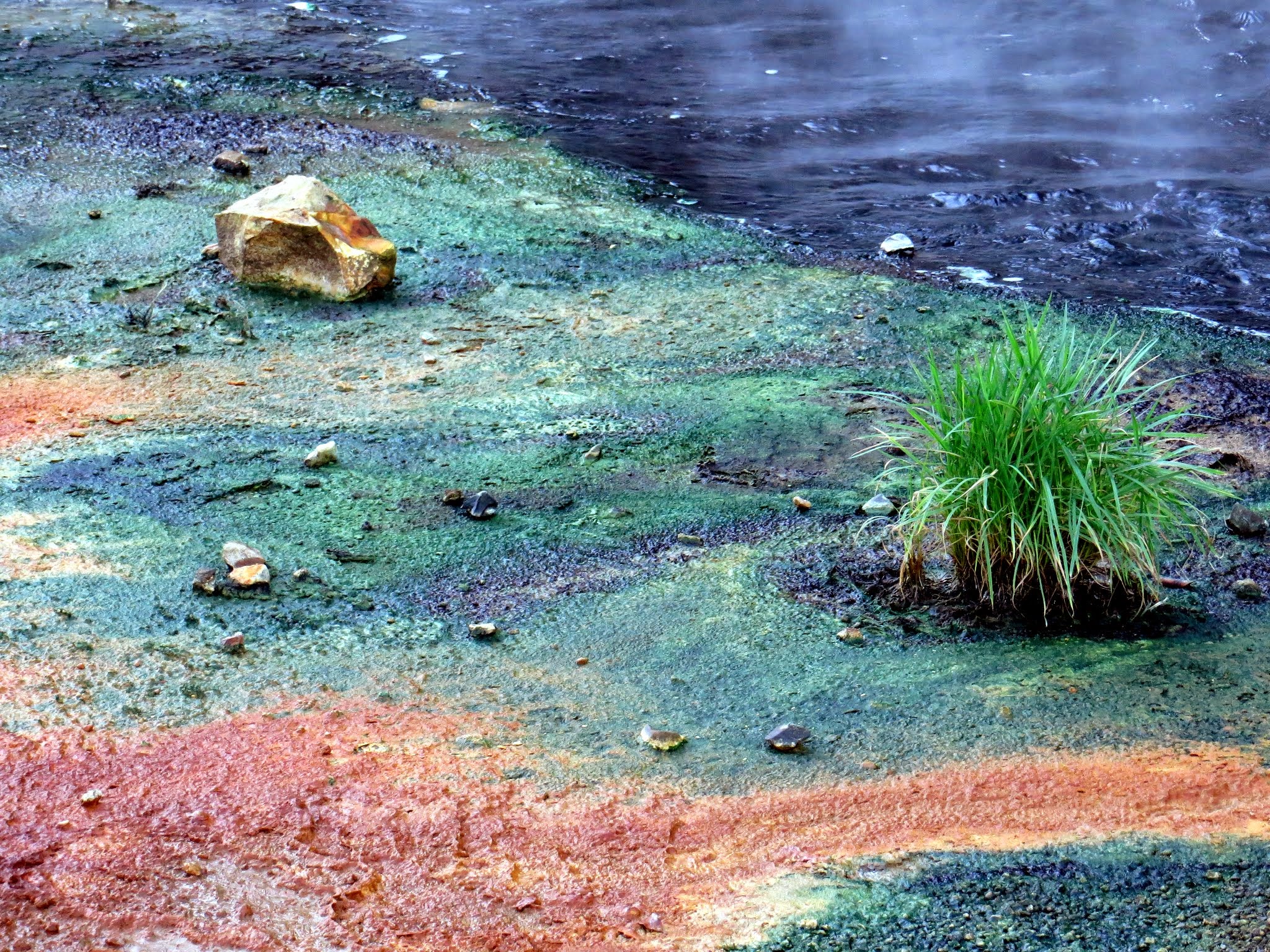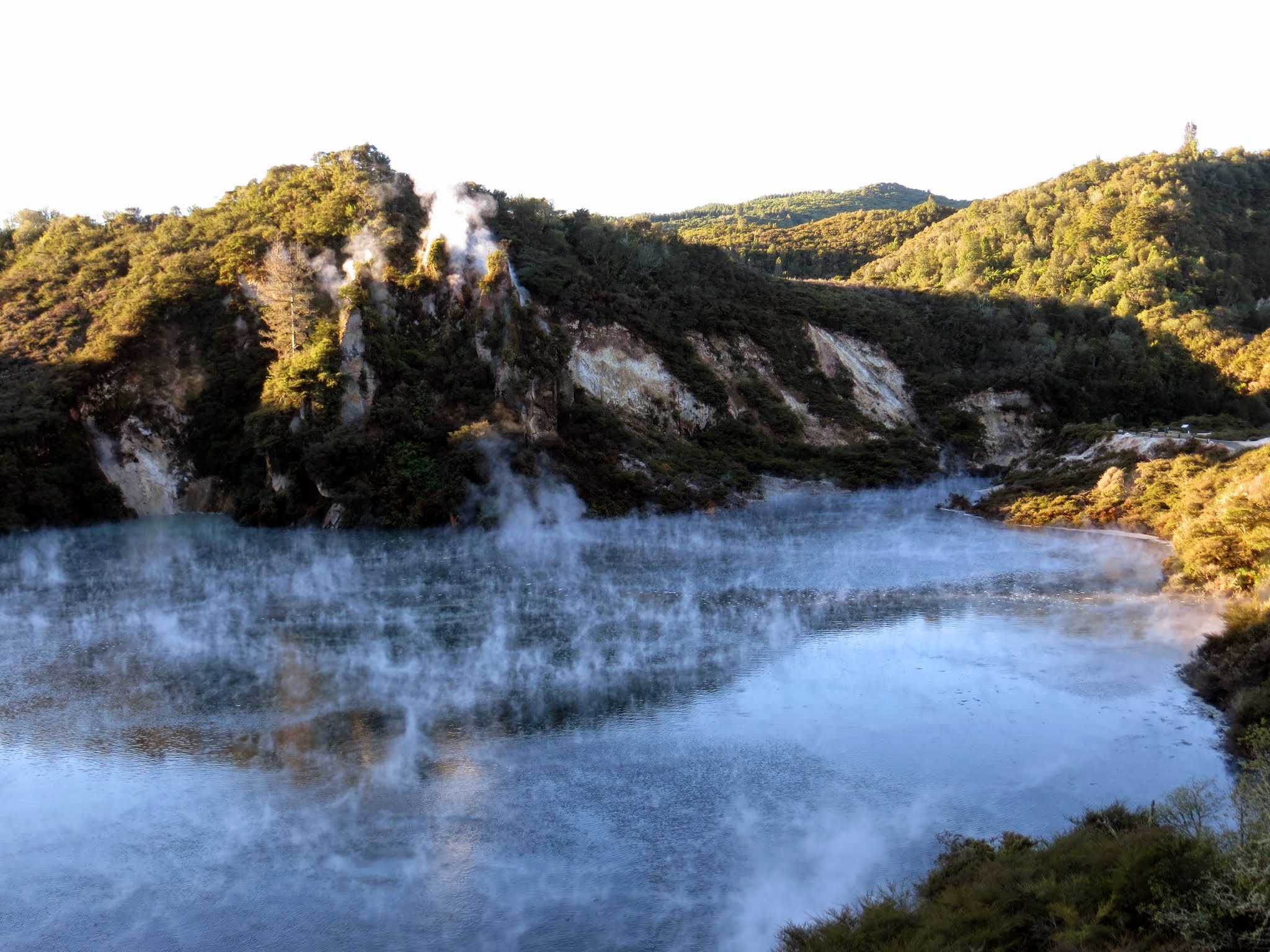May 24, 2013
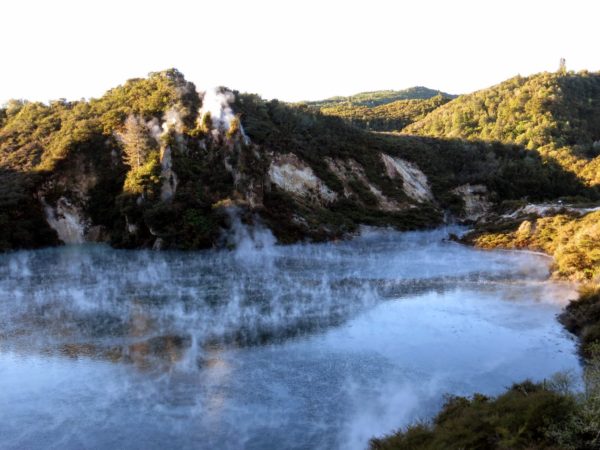
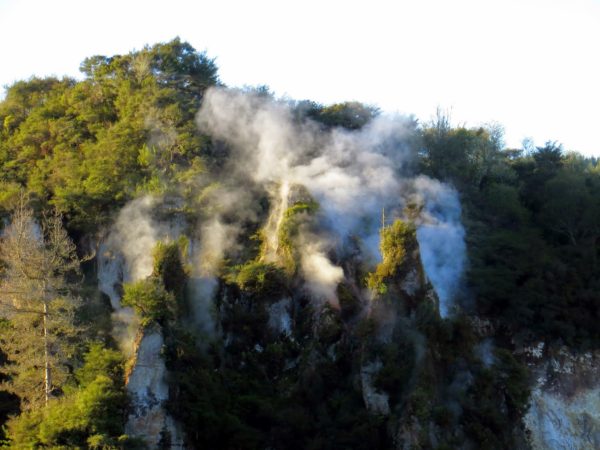
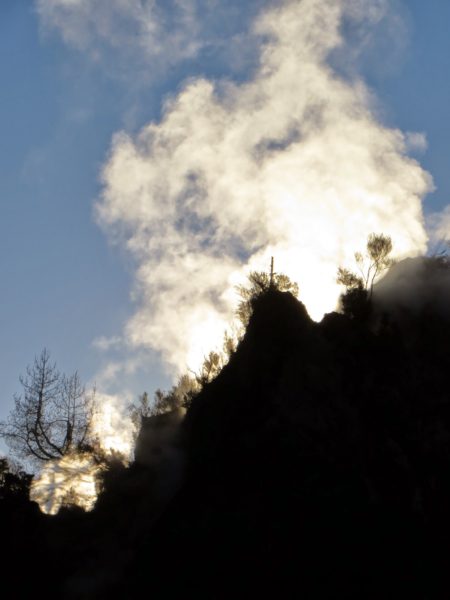
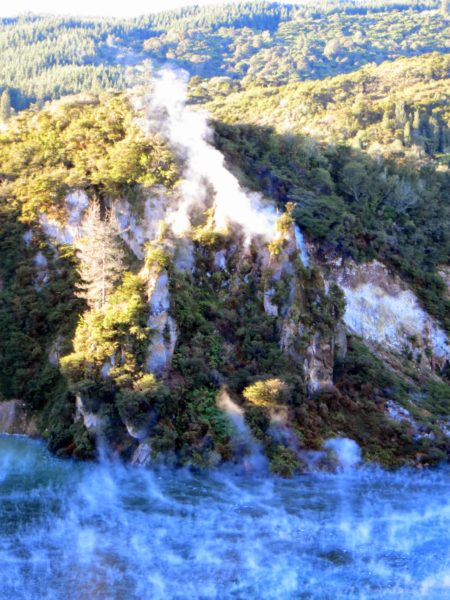
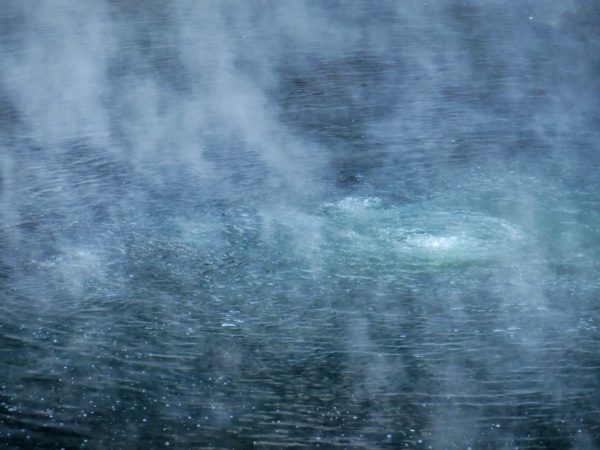
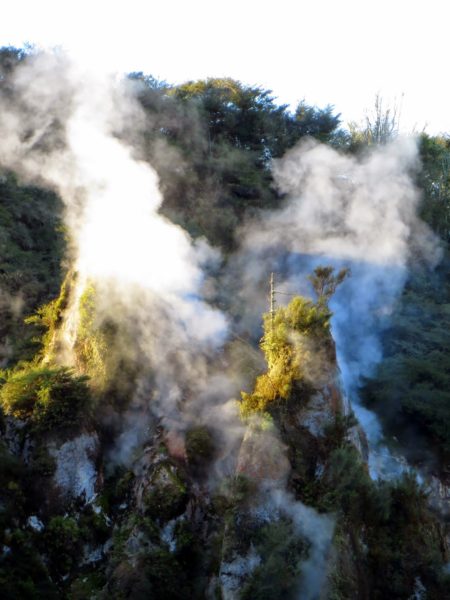
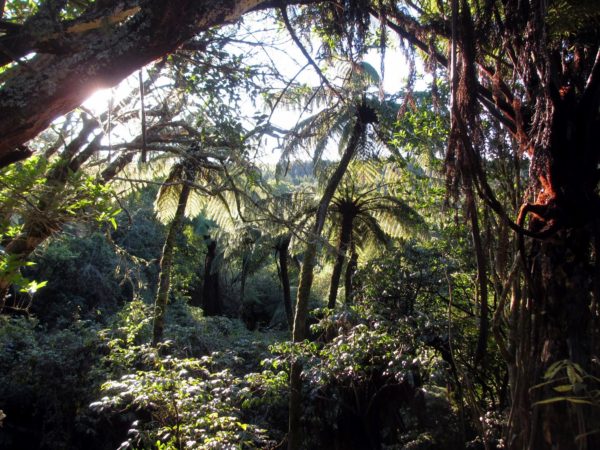
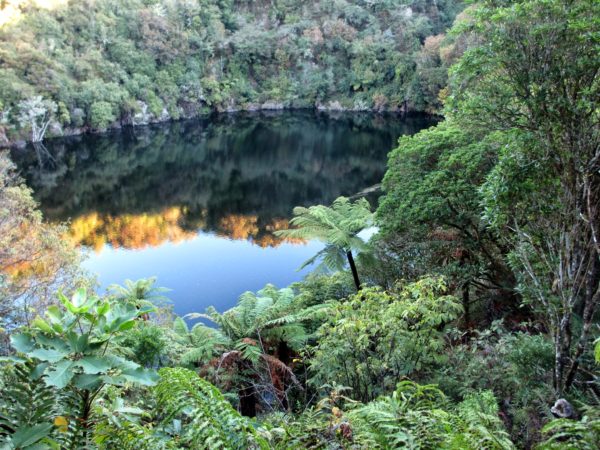
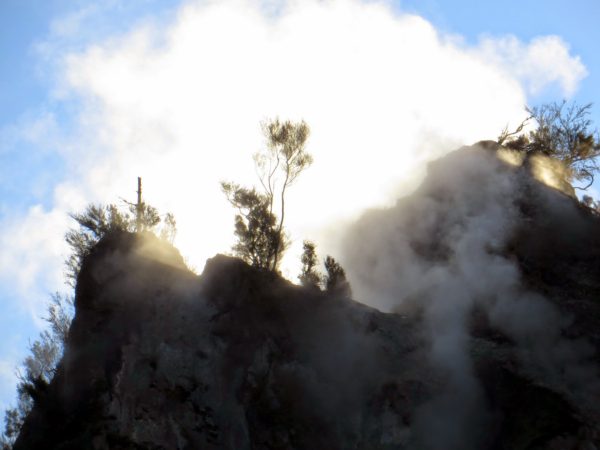
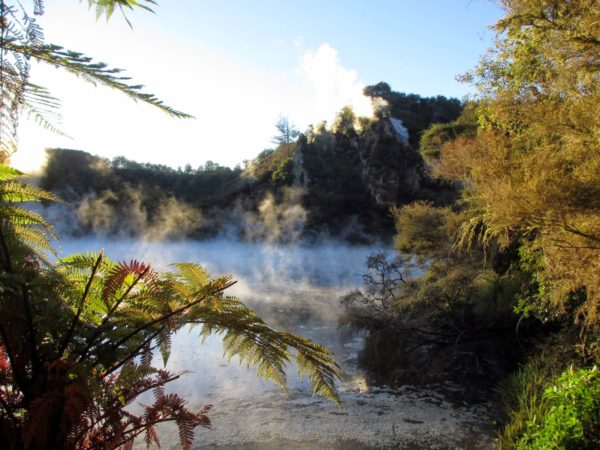
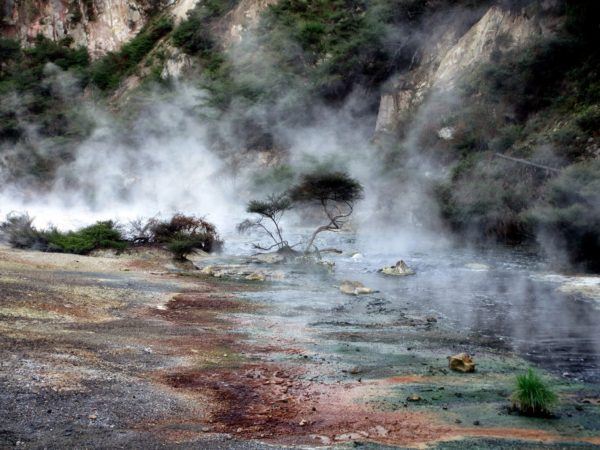
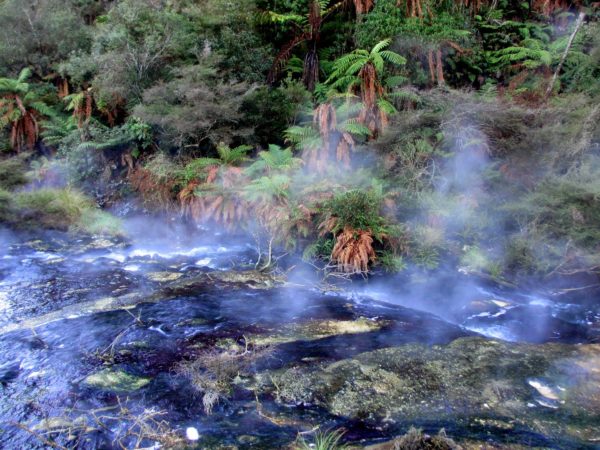
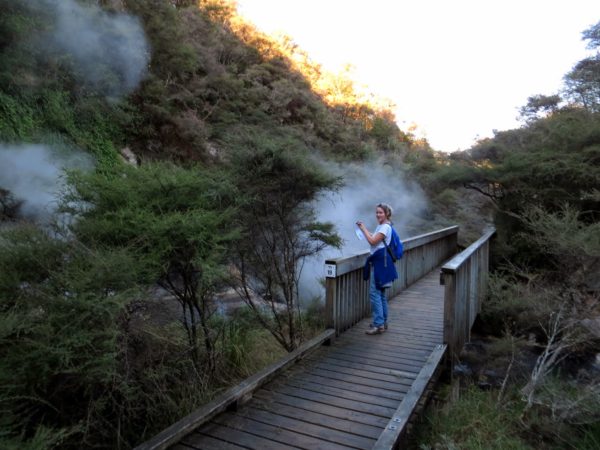
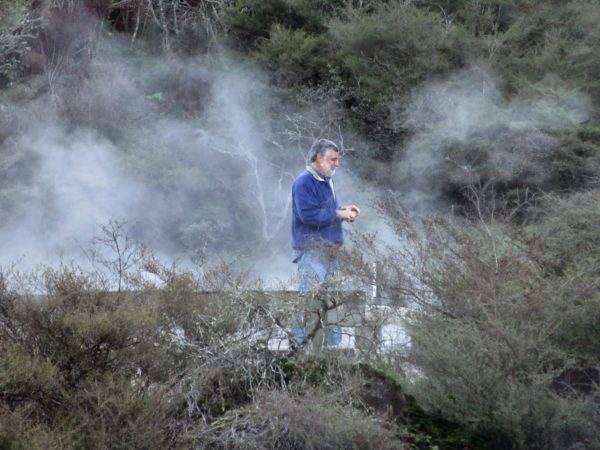
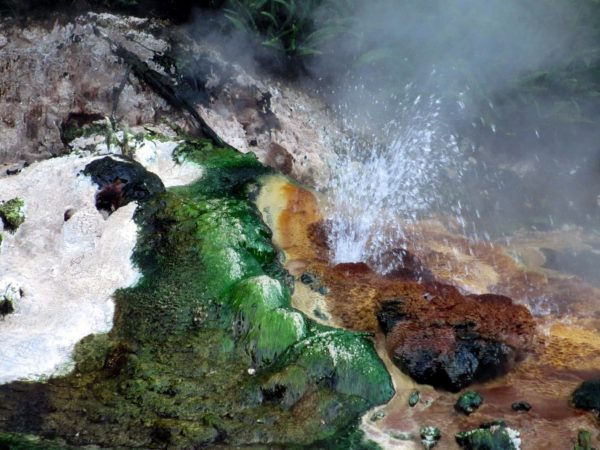
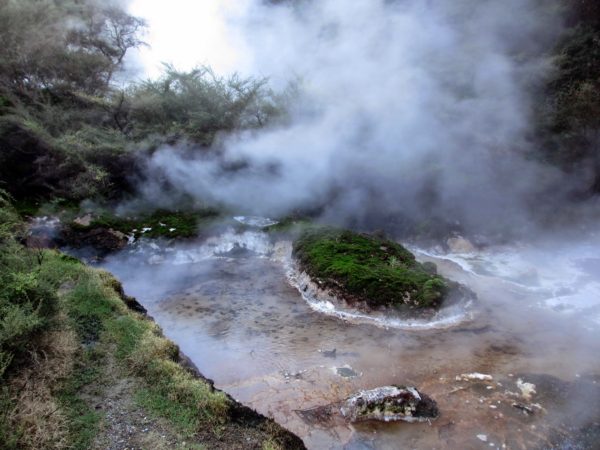
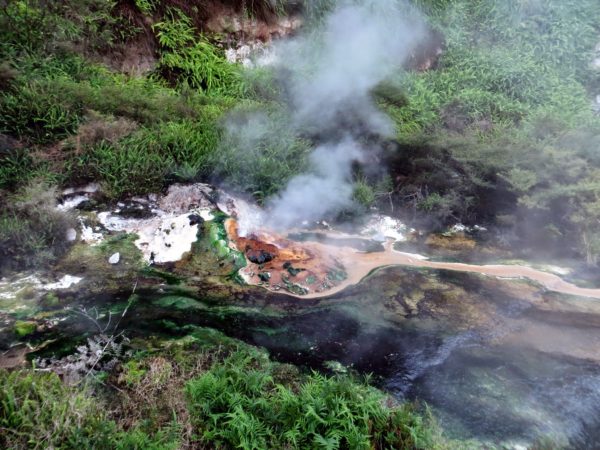
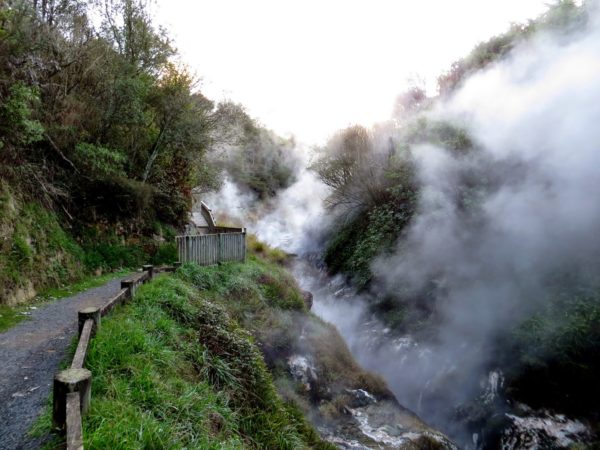
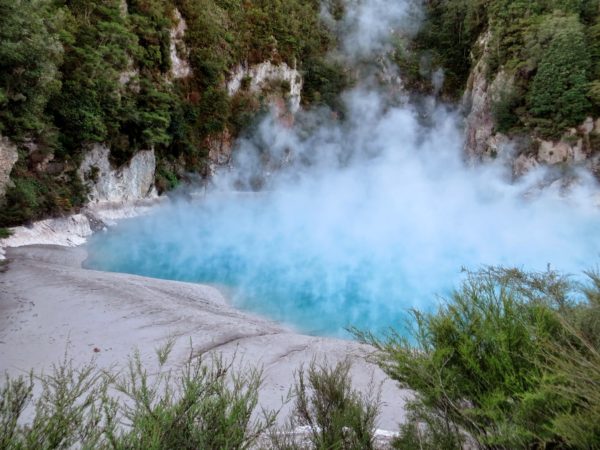
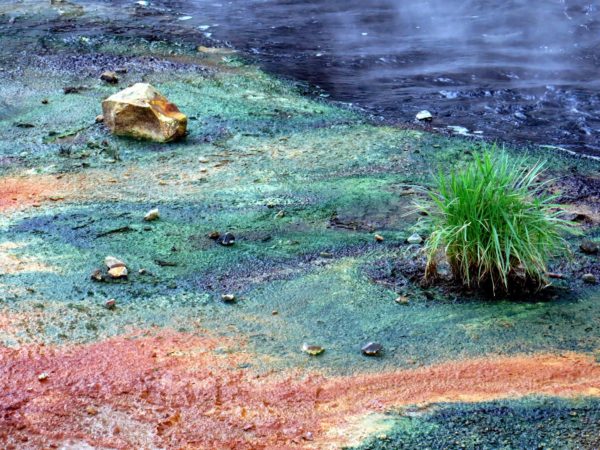
After the village we had just enough time to get to Waimangu Volcanic Valley, one of the big geothermal parks in the area. These parks are very much like the one in Yellowstone, with steaming lakes, boiling mud, geysers, and beautifully-colored but lethal pools of scalding hot water. Walking along the trails through this steaming, bubbling, sulfuric-smelling landscape felt like a visit to primordial Earth.
The path started with a panoramic view of the area and the dormant Mount Tarawera. This volcano was responsible for creating this nifty park in 1886 and is still making occasional changes. Our first sight was Frying Pan Lake, which until 1917 was known as Frying Pan Flat and had a trail leading to a small inn. I hope no one was there when it became Frying Pan Lake.
We headed down the trail into Echo Crater towards the lake, getting a good look at the beautiful little green lake in Southern Crater as we walked by. Much of the Rotorua area is somewhat dry and scrubby, but there are pockets of lush vegetation that enjoy the warm steaming atmosphere around these parks.
At the valley floor we marveled at the steaming, boiling lake and the masses of steam pouring out of the monolithic Cathedral Rocks. We continued on, finding beautifully colored thermal pools and rivers and even a small erupting spring, like a mini geyser. Finally we came to the highlight of the park: Inferno Crater Lake. It’s a stunning turquoise blue pool set in white silica sand. It’s extremely hot and very acidic, as lethal as it is beautiful.
We saw a few more geothermal wonders as we made our way to the shuttle pickup point. The last part of the trail ran along a boiling river in a narrow canyon. The surroundings were fantastical, and the smell of sulfur and feeling of steam just added to the atmosphere. This was yet another magical wonder in New Zealand!
As much as we enjoyed the park today, I had the nagging thought at the back of my mind: what is the risk in visiting a place like this? I really have no idea, but I can’t imagine it’s too big with all the masses of people that come through here year in and year out. The last surprise eruption was in 1973 which sprayed mud and debris for a 100 meters. When will the next surprise happen?
By the time we drove away from the park, it was getting late and we decided to head back to Tauranga (the forest walk would have to wait for next time). The mountain air was now brisk and remarkably cold. It had been a long time since we’d felt air like that, and while I rather enjoyed it, it was another sign that the season was ending and it was time to sail on. This would be our last excursion here this season. –Cyndi







